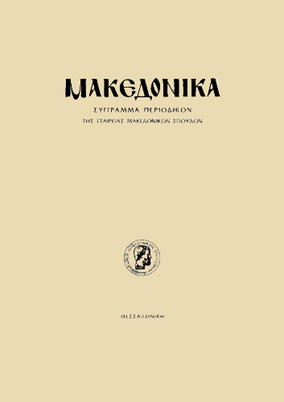Χαράγματα στους μολυβδοσκέπαστους τρούλους του Μπεζεστενίου της Θεσσαλονίκης
Part of : Μακεδονικά ; Vol.24, 1984, pages 168-187
Issue:
Pages:
168-187
Parallel Title:
Incisions on the lead covered cupolas of «Bezesten», Thessaloniki
Section Title:
Articles
Abstract:
During the reinforcing works, undertaken by the 9th Ephory of ByzantineAntiquities, for the «Bezesten» in Thessaloniki, incisions have been noticedon the lead covering the six cupolas of the monument.The «Bezestens», developed during the Ottoman period,were covered markets that evolved later into commerce centres in the Ottoman towns. The«Bezesten» of Thessaloniki is a building of the 15th C.It is considered that the incisions have been made by craftsmen, not byvisitors. There is a total of 21 incisions: 5 of them are in Greek, 12 in a foreign language of which 9 in Turkish (Palaeoturkish script), 2 in South Slavic idiom and 1 in French. The remaining are thematic representations. A primary classification of the incisions is attempted to be one in their chronological order. Their dates appear to refer to later interventions on the monument, related to repairs on its foundations, a fact proved by the researchers. Another point under observation is the relation between craftsmen of different nationalities and the dates of the incisions. This observation leads to the conclusion that craftsmen of different nationalities did not coexist in the same repair works. This phenomenon is related to the function of the masonic guilds, where different nationalities maintained separate guilds.Finally an initial approach is attempted on the subject: co-ordination and organization of the repair works concerning the monastical buildings. The «Bezesten», according to the historical sources, is considered a monastical building.
Subject:
Subject (LC):
Notes:
856:https://ejournals.epublishing.ekt.gr/index.php/makedonika/article/view/5827, DOI: https://doi.org/10.12681/makedonika.266
Electronic Resources:




